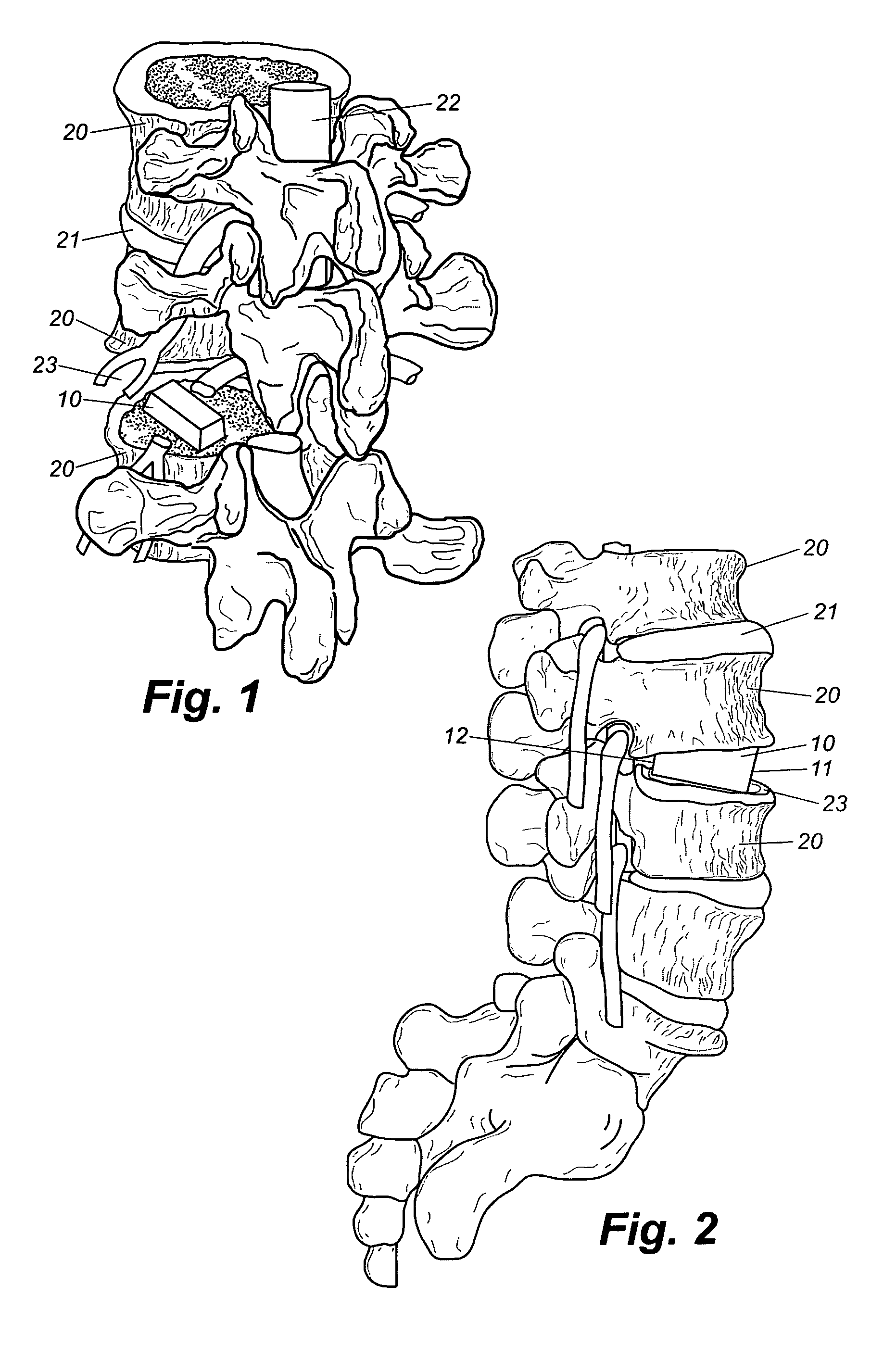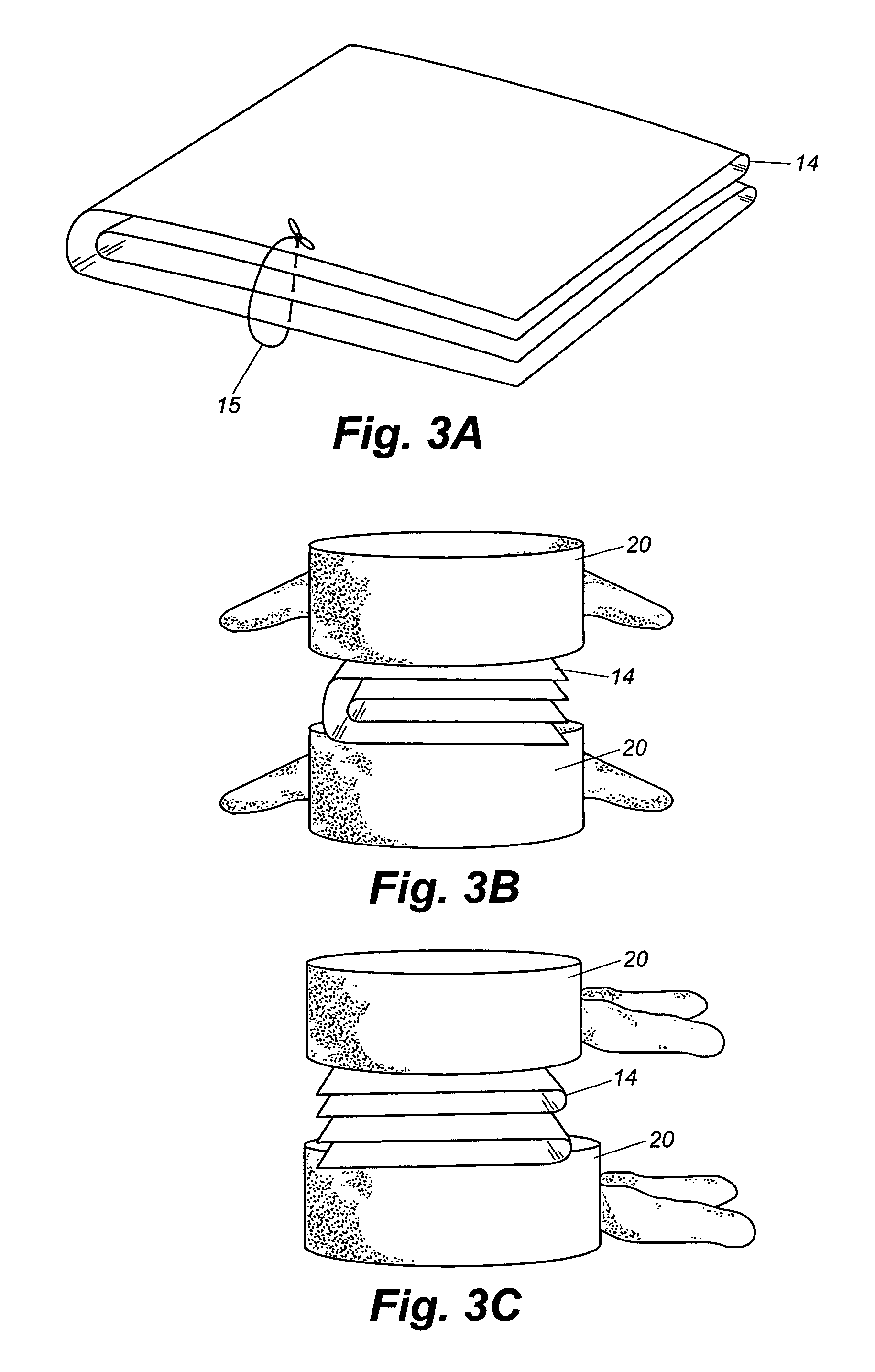Intervertebral disc prosthesis and methods of implantation
a technology of intervertebral discs and prostheses, applied in the field of intervertebral disc prosthesis and methods of implantation, can solve the problems of back pain, economic cost, alone exceeding $80 billion annually, etc., and achieve the effect of reducing injury to surrounding tissues and organs and relatively easy insertion
- Summary
- Abstract
- Description
- Claims
- Application Information
AI Technical Summary
Benefits of technology
Problems solved by technology
Method used
Image
Examples
Embodiment Construction
[0027]A full and enabling disclosure of the present invention, including the best mode known to the inventor of carrying out the invention, is set forth more particularly in the remainder of the specification, including reference to the accompanying drawings, wherein like reference numerals designate corresponding parts throughout several figures. This description is made for the purpose of illustrating the general principles of the invention and should not be taken in the limiting sense.
[0028]Examples of intervertebral disc prostheses 10 in accordance with the present invention are shown in FIGS. 1–4B. An intervertebral disc prosthesis 10 of the present invention can support adjacent vertebrae 20 after partial or total surgical excision of an intervertebral disc 21. It is contemplated that the intervertebral disc prostheses 10 of the present invention may be used to replace an intervertebral disc 21 that has degenerated due to traumatic injury, vertebral displacement, disease such ...
PUM
 Login to View More
Login to View More Abstract
Description
Claims
Application Information
 Login to View More
Login to View More - R&D
- Intellectual Property
- Life Sciences
- Materials
- Tech Scout
- Unparalleled Data Quality
- Higher Quality Content
- 60% Fewer Hallucinations
Browse by: Latest US Patents, China's latest patents, Technical Efficacy Thesaurus, Application Domain, Technology Topic, Popular Technical Reports.
© 2025 PatSnap. All rights reserved.Legal|Privacy policy|Modern Slavery Act Transparency Statement|Sitemap|About US| Contact US: help@patsnap.com



